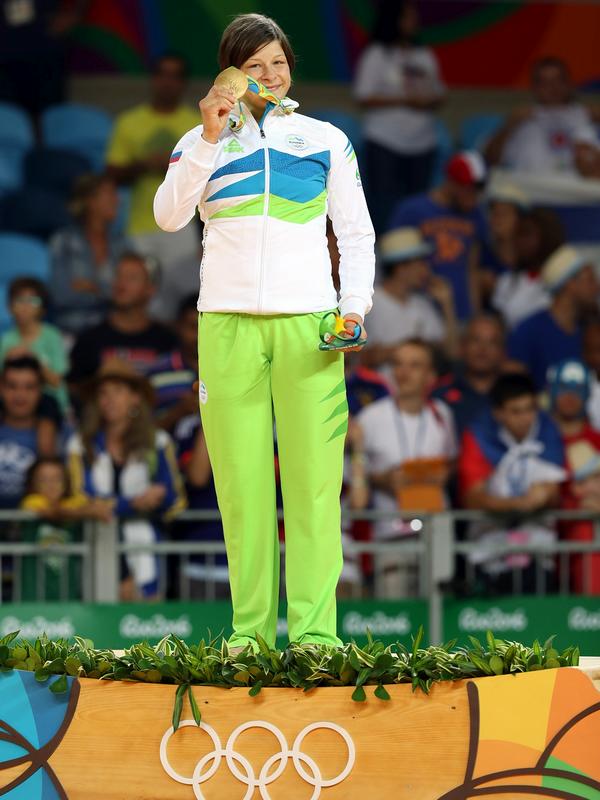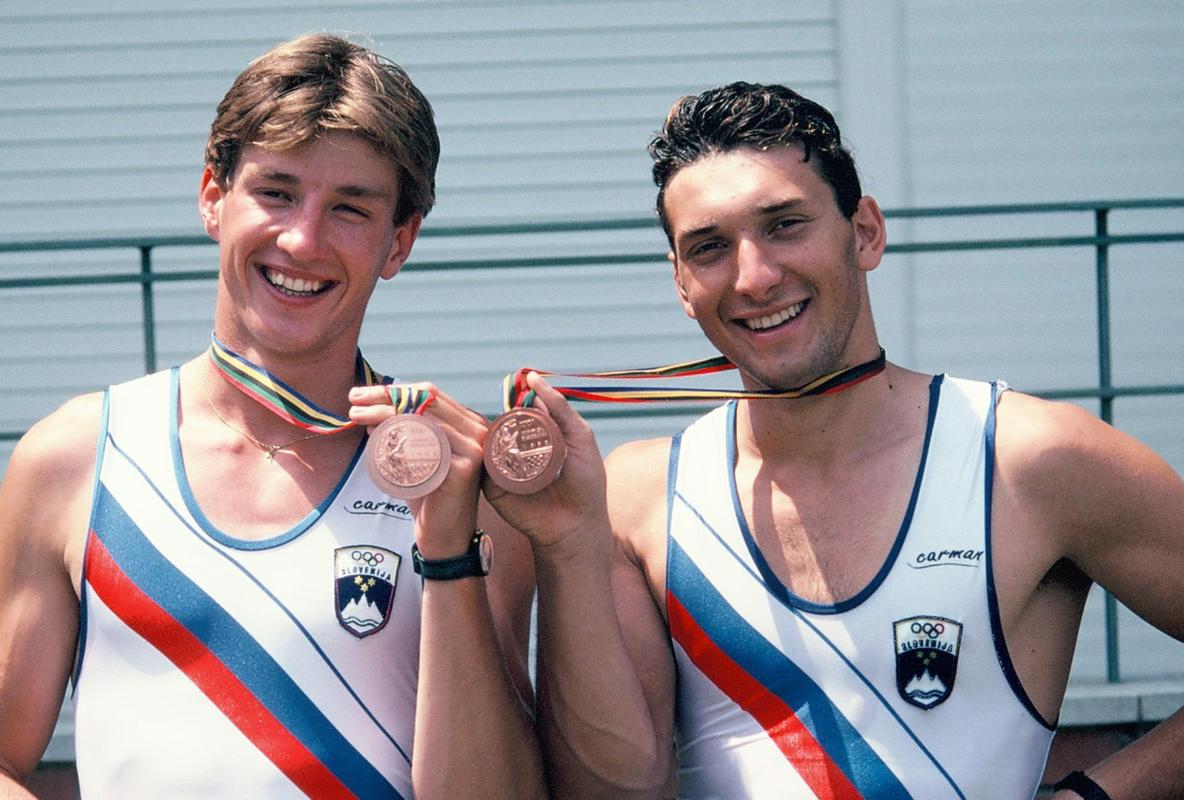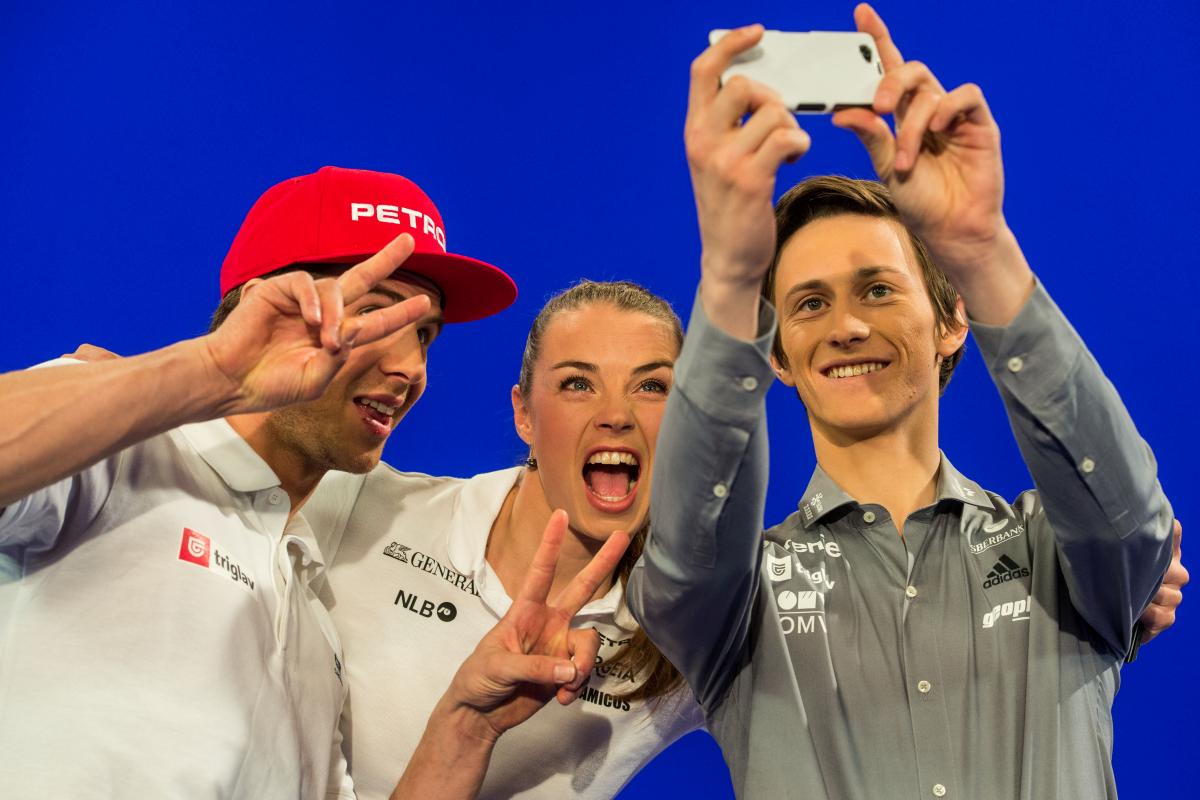


My work is so much nicer when Slovenes are winning medals. I remember from the previous games that all our athletes were overjoyed by success, but the following were particularly emotional: Brigita Bukovec and Andraž Vehovar in Atlanta, Tina Maze in Sochi, and Iztok Čop and Luka Špik in London, the latter since it was their last Olympic performance. All medalists are happy, but the joy felt by medal favourites is sometimes less spontaneous than when an athlete wins a medal slightly unexpectedly. It’s even more beautiful then.

The iconic moments captured by his camera include all Slovenia’s Olympic medals, from the first won by Iztok Čop and Denis Žvegelj, to the most "brutal" earned by Petra Majdič, who took bronze in 2010 despite skiing with four broken ribs and a collapsed lung.
"If you take real pleasure in taking photos, and if you wish to show the best an athlete can offer the viewer, photos should be exciting and good," says Fevžer. Photography is his life, time means nothing, he works day or night, because the only thing that really matters is the quality if his photos.
For Fevžer, a good sports photo is not just technically perfect, what counts the most is that the photographer has managed to capture an outburst of happiness or instant joy, which is unforgettable. Fevžer favours emotion over action. "I have goosebumps when I remember how overwhelmingly emotional it was listening to Slovenia’s national anthem, or any other anthem, being played to honour the winner." A unique experience. What I remember most are images, shots of pure joy and spontaneity. Not the moment when the winner is presented with a medal, but the moment when he or she realises that they have succeeded. Just an instant, a second, or two. And if I can manage to capture this emotion, there is nothing like it. Sports photographers are always on the lookout for good action photos. It is about knowing the sport you are shooting, and having a great gear. When people say that anyone can take a good photograph, they couldn't be further from the truth. Only sports photographers are able to take great photos, because we practice daily. In recent years, with digital photography gaining in popularity and offering opportunities for cost-free experimentation, people do all sorts of things. However, when a photographer only has one chance to capture a skier’s performance in a millisecond window, it is not a game anymore.
The Olympic Games – A huge challenge for a photographer
In the 17 days of the Olympic Games, a photographer is only focused on work. "I want to take as many shots as possible, edit and archive them. The Olympic Games are not just another large sporting event, they are a special experience. I am flooded with adrenaline, filled with something bigger than myself. When it is all over, I feel completely drained and need quite some time to recover. The Olympics are a real challenge for sports photographers because so much is going on, and there are so many emotions that viewers also sense. This is where you realise why athletes are so overwhelmed when they win an Olympic medal, or devastated if they fail."
How is it possible for a freelancer from Slovenia to compete with large photo agencies? "You can never compete with large agencies who send five or six photographers to a large event and cover all the ground. In indoor sports these agencies have three or four photographers near the court, one on the grandstand, and another one taking shots from the ceiling. The bigger the agency, the better its chances of getting special photography permits. It’s quite logical. They supply the entire world with their photos whereas my photos are, in the best-case scenario, taken up by Slovenian media and sponsors of Slovenia’s national team."
Albertville 1992 – The beginning of an Olympic story
Aleš Fevžer’s Olympic story began with the 1992 Winter Olympics in Albertville. These were Slovenia’s first Winter Olympics as an independent state. Have the games changed a lot in these 24 years? "Tremendously. The media pressure has been growing year by year and I am really happy that I started in 1992, when it was much easier to get to the Games than it is today when Slovenia is only allowed three photographers and 10 journalists. The Internet and online media have further increased the number of the press and photographers. I think that about 1,200 photographers come to the Olympic Games. Today, in the era of the media boom and digital media, large agencies can easily photograph all athletes. In the past, when photographic films were used, it was much harder due to the system of work. What saddens me is that today organisers must spend so much energy on security issues. Scanners, inspections and accreditations are everywhere. Photographers, media and spectators find this rather frustrating as they have to stand in queues wherever you go. For example, photographers are doing all we can to move quickly between venues, and then there is a queue and a lot of waiting before you can even get into a stadium or a press centre. Technology has also changed a lot over time. Things were completely different up to the year 2000. Cameras recoded images on photographic film, and after taking some photographs we had to have the slides or colour negatives processed. But then again there was no pressure of instant publication as there is today."
Sports photography remains his big love
Primarily because most athletes, novices at the Games or big stars, are really open, friendly and uncomplicated. They are a joy to work with, both when doing portraits that require personal contact or just photographing their performance from the edge of the sports surface. For Fevžer, the 1994 Lillehammer Games were the best Winter Olympics ever, because Norwegians are so passionate about sport and they were able to create a unforgettable atmosphere. He also has fond memories of the 2010 Summer Olympics in Australia, where he met many interesting people. Australians, like Norwegians, are crazy about sport. Fevžer regrets the growing commercialisation in sport the related loss of some of its charm. At the Olympic Games, he says, the main prize is still the medal, and not cash.
My work is so much nicer when Slovenes are winning medals. I remember from the previous games that all our athletes were overjoyed by success, but the following were particularly emotional: Brigita Bukovec and Andraž Vehovar in Atlanta, Tina Maze in Sochi, and Iztok Čop and Luka Špik in London, the latter since it was their last Olympic performance. All medalists are happy, but the joy felt by medal favourites is sometimes less spontaneous than when an athlete wins a medal slightly unexpectedly. It’s even more beautiful then.

































































